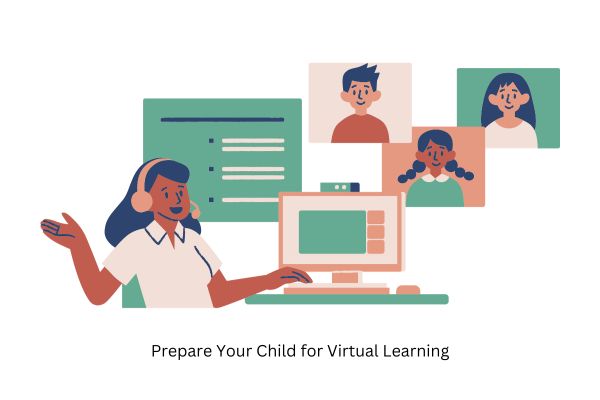Have you ever noticed how your children’s eyes light up when they discover something new? They are born as little explorers with an insatiable curiosity that fuels their desire to understand the world around them. As parents, we are responsible for keeping that spark alive and fostering a love of learning that will last a lifetime. With so many distractions like school, structured activities, and technology, it’s easy for that flame to flicker out. But fear not because I’m here to guide you through how you can ignite that passion and inspire your child to become a lifelong learner!
Why Curiosity Matters?

Curiosity is more than just asking questions. It’s the driving force behind exploration, discovery, and innovation. It fuels critical thinking, problem-solving, and creativity. Curious children are more engaged in their learning inside and outside the classroom. They’re more likely to persevere through challenges, seek new experiences, and develop a growth mindset. In short, fostering curiosity is an investment in your child’s future success and happiness.
Strategies for Spark-Igniting Learners
Here are some practical strategies you can use to cultivate a love of learning in your children:

1. Embrace the Power of Play:
Play is not just fun; it’s essential for learning. Unstructured play allows children to explore their interests, experiment with ideas, and develop critical cognitive skills. Provide open-ended toys and materials like blocks, Legos, art supplies, and costumes that encourage imagination and creativity. Let them build, tinker, and explore without constant adult intervention.
2. Ask Open-Ended Questions:
Instead of providing answers, please encourage your children to think for themselves. Ask questions like “What do you think would happen if…?” or “How could we solve this problem?” It fosters critical thinking and helps them develop their unique perspectives.
3. Model a Love of Learning:
Children learn by example. They’re more likely to do the same if they see you reading for pleasure, taking classes, or exploring new hobbies. Share your curiosities and learning journeys with them. Talk about things you’ve learned recently, books you’re reading, or new skills you’re trying to acquire.
4. Make Learning an Adventure:
Turn everyday experiences into learning opportunities. Visit museums, zoos, aquariums, and historical sites. Take nature walks, explore new parks, and attend cultural events. Please encourage them to ask questions about what they see and experience.
5. Turn Mistakes into Learning Moments:
Mistakes are inevitable, but they’re also valuable learning opportunities. Instead of focusing on the error, use it as a springboard for discussion. Ask your child what they learned from the experience and how they can do it differently next time.
6. Celebrate Effort and Progress:
Praise your child for their effort, curiosity, and willingness to learn, not just their achievements. It helps them develop intrinsic motivation and a growth mindset, believing they can understand and improve with effort.
7. Cultivate a Reading Habit:
Reading exposes children to new worlds, ideas, and perspectives. Make reading a regular part of your family routine. Read aloud to younger children, visit libraries together, and let them choose books that pique their interest.
8. Embrace Technology Wisely:
Technology can be a powerful tool for learning, but it’s essential to set limits and use it mindfully. Encourage educational apps, games, and websites that challenge their thinking and spark their curiosity. Monitor screen time and ensure technology doesn’t replace other essential activities.
9. Make Learning Fun and Engaging:
Learning shouldn’t feel like a chore. Find ways to make learning fun and engaging, whether it’s through games, experiments, hands-on activities, or collaborative projects. Connect learning to their interests and passions, making it relevant and meaningful to them.
10. Create a Learning-Friendly Environment:
Surround your children with books, puzzles, educational toys, and other materials that encourage exploration and inquiry. Make sure they have a dedicated space for learning and reading, free from distractions.
Remember, fostering a love of learning is a journey, not a destination. There will be ups and downs, moments of frustration and excitement. But by consistently nurturing their curiosity, providing opportunities for exploration, and celebrating their efforts, you can help your children develop a lifelong passion for learning that will enrich their lives in countless ways.
Bonus Tip
Involve your children in the learning process. Ask them what they want to learn about, let them choose topics for family projects, and encourage them to share their knowledge with others. It empowers them to take ownership of their learning and actively participate in their education.
You can help your children become curious, lifelong learners excited to explore the world and its endless possibilities by following the above strategies and creating a nurturing environment.





